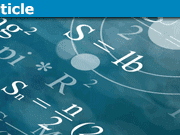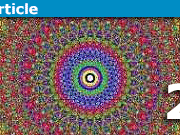What is a Fibre Bundle? A 5 Minute Introduction
Table of Contents
Definition/Summary
Intuitively speaking, a fibre bundle is space E which ‘locally looks like’ a product space B×F, but globally may have a different topological structure.
Extended explanation
Definition:
A fibre bundle is the data group
(We assume the base space B to be connected.)
The local triviality condition states the following:
we require that for any
Visualization
The easiest way of visualizing a fibre bundle is one of the most ordinary household objects: the hairbrush.
In this case the base space
In the trivial case
Examples
Examples of non-trivial bundles are the Möbius strip and the Klein bottle.
In the case of the Möbius strip, the fibre bundle ‘locally looks like’ the flat Euclidean space R^2, however, the overall topology is markedly different.
A smooth fibre bundle is easily constructed with the above definition using smooth manifolds as
Generalization of fibre bundles may be given in a variety of ways. The most common is to require that the transition between the local trivial neighbourhoods conform to a certain
See also: https://www.physicsforums.com/insights/the-pantheon-of-derivatives-i/ (esp. part 3)
This article was authored by several Physics Forums members with PhDs in physics or mathematics.









"see the first figure"
Where is it? I see no figure.
"
I have removed the language for now